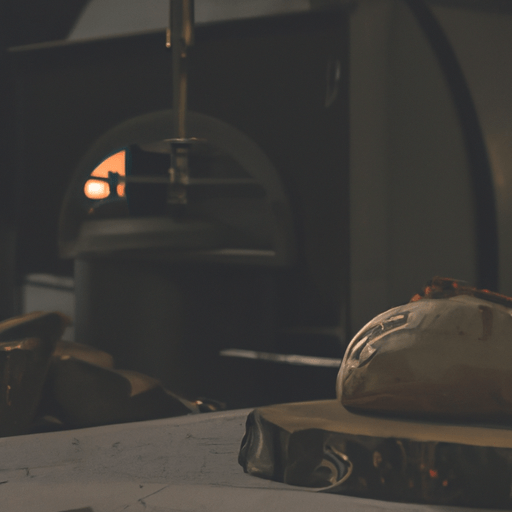Have you ever wondered what it would be like to bake without electricity? Maybe you’re interested in off-grid living or simply want to try your hand at a traditional baking method. Well, you’re in luck! In this article, we’ll be discussing the art of baking without electricity and how you can master it yourself. So, if you’ve ever wanted to bake bread or pastries the old-fashioned way, keep reading to learn more.
Nowadays, we rely heavily on electricity for almost every aspect of our lives, including baking. But just imagine the satisfaction and freedom that comes with being able to bake delicious treats without the need for electricity. It’s like taking a step back in time and reconnecting with our ancestors. From building a wood-fired oven to using alternative heat sources like propane or charcoal, there are plenty of ways to bake without electricity.
In this article, we’ll delve into the various techniques and tools you can use to bake without electricity. From mastering the art of sourdough baking to harnessing the power of the sun with solar ovens, there’s a method for every aspiring baker. So, if you’re ready to discover the joy and skill involved in baking without electricity, let’s get started! Off-grid living is becoming an increasingly popular choice for individuals seeking self-sufficiency and sustainability. By disconnecting from the traditional power grid, people are able to live in harmony with nature and reduce their impact on the environment. Being off the grid requires individuals to be resourceful and adapt to a lifestyle that relies on alternative methods for everyday tasks. One such task that might seem daunting without electricity is baking. In this article, we will explore the art of baking without electricity and provide you with the knowledge and techniques needed to master this skill.
There are numerous advantages to off-grid living, and baking without electricity is just one of them. By embracing a self-sufficient lifestyle, you can reduce your reliance on outside sources and become more independent. Baking without electricity allows you to utilize the resources available to you, such as solar power or alternative heat sources like wood-fired ovens. This not only saves energy and reduces your carbon footprint but also provides a sense of satisfaction and accomplishment.
Of course, off-grid living comes with its own set of challenges. One of the main challenges is the lack of access to conventional baking equipment, such as electric ovens or mixers. However, with the right techniques and a bit of creativity, these challenges can be overcome.
When it comes to baking without electricity, choosing the right baking methods is crucial. Understanding the different baking methods available will help you select the most suitable one for off-grid baking. Some popular methods include Dutch oven baking, Dutch oven stovetop baking, and open fire baking. Each method has its own unique advantages and limitations, so it’s important to experiment and find the one that works best for you.
Exploring traditional baking techniques can also expand your off-grid baking repertoire. Before modern conveniences like electric ovens and mixers, people relied on traditional tools and equipment to bake their goods. Rediscovering these techniques not only adds a sense of nostalgia but also allows you to create delicious baked goods without electricity. Traditional methods like hand kneading, using a hearth or clay oven, or even utilizing a cast-iron skillet can all enhance your off-grid baking experience.
If you have the space and resources, building a wood-fired oven can be a great addition to your off-grid baking setup. A wood-fired oven provides consistent and even heat distribution, allowing you to bake a wide variety of goods. Considerations such as size, location, and materials are important when constructing a wood-fired oven. With a step-by-step construction guide, you can build your own oven and enjoy the benefits of baking with this traditional method.
Incorporating solar-powered baking devices into your off-grid kitchen can also be a game-changer. Solar ovens and solar cookers harness the power of the sun to generate heat for baking. These devices are not only eco-friendly but also convenient, as they require minimal maintenance and are easy to use. Tips for maximizing solar baking efficiency include positioning the oven correctly, using reflectors to direct sunlight, and adjusting the cooking time for optimal results.
In addition to wood-fired ovens and solar-powered devices, there are various alternative heat sources that can be utilized for off-grid baking. Propane or gas stoves, outdoor grills, and campfire cooking are all viable options. Each heat source has its own pros and cons, so it’s important to consider factors such as availability, cost, and ease of use when determining which alternative heat source is most suitable for your off-grid baking needs.
Adapting recipes for off-grid baking requires an understanding of temperature adjustments and modifications. Without the precise control that an electric oven provides, it may be necessary to make slight changes to baking times and temperatures. Monitoring your baked goods closely and experimenting with different techniques will help you achieve the desired results. Keep in mind that off-grid baking may involve a bit of trial and error, but the end result will be well worth the effort.
In conclusion, mastering the art of baking without electricity is not only possible but also fulfilling. Off-grid living offers a unique opportunity to explore traditional baking methods, embrace alternative heat sources, and adapt recipes to suit your off-grid lifestyle. By choosing the right baking methods, exploring traditional techniques, building a wood-fired oven, incorporating solar-powered devices, and adapting recipes for off-grid baking, you can become a skilled off-grid baker. Embrace the joys of baking without electricity and enjoy the delicious creations that come from your own resourcefulness and creativity. Happy baking!





